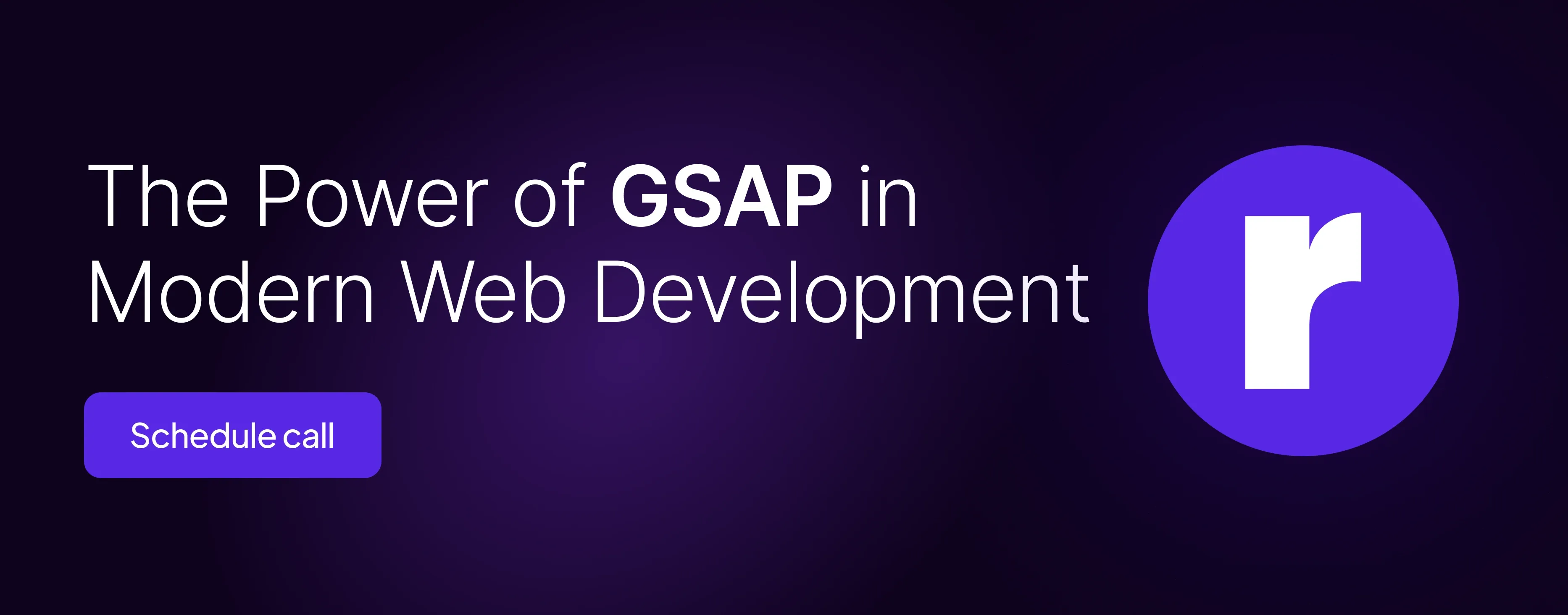Why Every Developer Should Learn GSAP for Animations

Written by
Ankit Godara
Front End Developer
Mohit Bishnoi
Front End Developer
Table of contents
Build with Radial Code
If you’re a developer—whether front-end, full-stack, or dabbling in creative coding—learning GSAP can significantly elevate your skillset. This article will explore why GSAP deserves your attention, what sets it apart from alternatives, and how it can future-proof your projects.
The Gap Between “Good Enough” and “Outstanding” Animations
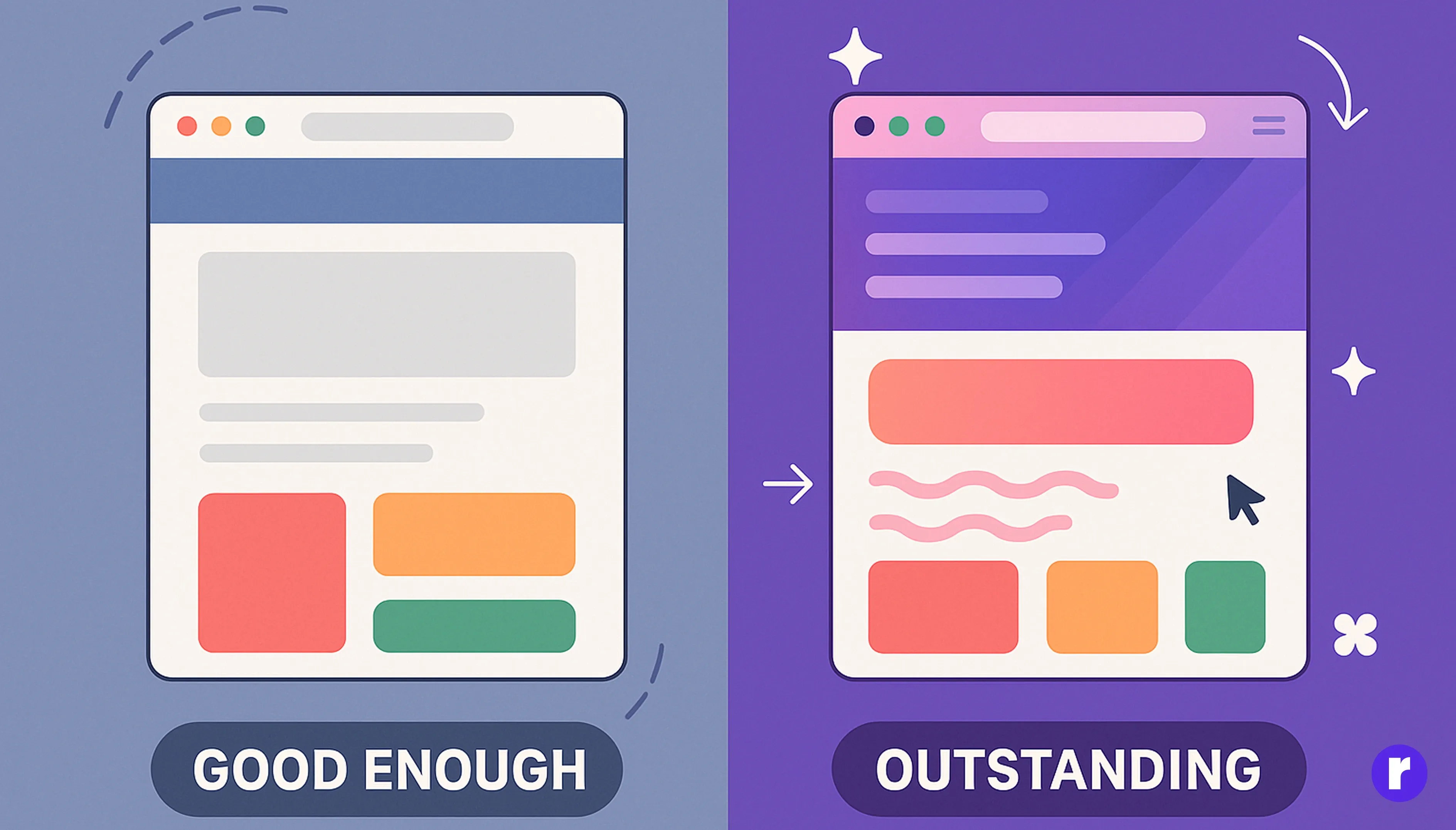
Most frameworks and libraries today offer some animation capabilities. CSS transitions, CSS animations, and even React or Vue’s built-in transition components are useful. However, they often feel limiting.
- Need to stagger multiple elements with perfect timing? It gets complicated quickly.
- Want to chain animations with precise sequencing? Be prepared to work around delays.
- Looking for pixel-perfect control across browsers? Native CSS animations may behave differently depending on rendering engines.
This is the gap GSAP fills. It doesn’t just make animations possible; it makes them performant, reliable, and highly customizable. With GSAP, you can bring professional-level animation techniques into everyday web projects without overwhelming complexity.
Learn more about gsap click here
Why GSAP Is a Developer’s Secret Weapon
GSAP has been battle-tested for over a decade. It’s known for maximizing performance, especially on mobile devices. Animations remain smooth even under heavy DOM or canvas workloads. While CSS transitions may stutter when many elements animate simultaneously, GSAP handles it gracefully by intelligently managing rendering cycles. This allows you to push the limits—parallax scrolling, SVG morphing, 3D-like transformations—without worrying about dropped frames.
Fine-Grained Control
GSAP offers control that CSS alone cannot:
- Timeline sequencing for complex animation storytelling.
- Control over easing curves beyond the standard ease-in-out.
- Ability to pause, reverse, or restart animations at will.
- Precise targeting of properties across DOM, SVG, and even WebGL.
For developers who think programmatically, GSAP feels natural. Animations become controllable states in your app.
Cross-Platform Reliability
One of the biggest challenges in front-end development is cross-browser consistency. GSAP’s creators have invested years in ensuring animations work the same across Chrome, Firefox, Safari, and even legacy browsers. This reliability is invaluable, especially when delivering client-facing projects.
Rich Plugin Ecosystem
GSAP is more than a core library; it comes with an ecosystem of plugins that extend its capabilities:
- ScrollTrigger: Animate elements on scroll effortlessly.
- MorphSVG: Fluidly morph one shape into another.
- Draggable: Add drag-and-drop interactivity with inertia physics.
- SplitText: Animate individual characters, words, or lines.
These plugins transform GSAP from a simple animation tool into a comprehensive creative toolkit.
Beyond Pretty Effects: The Business Value of GSAP
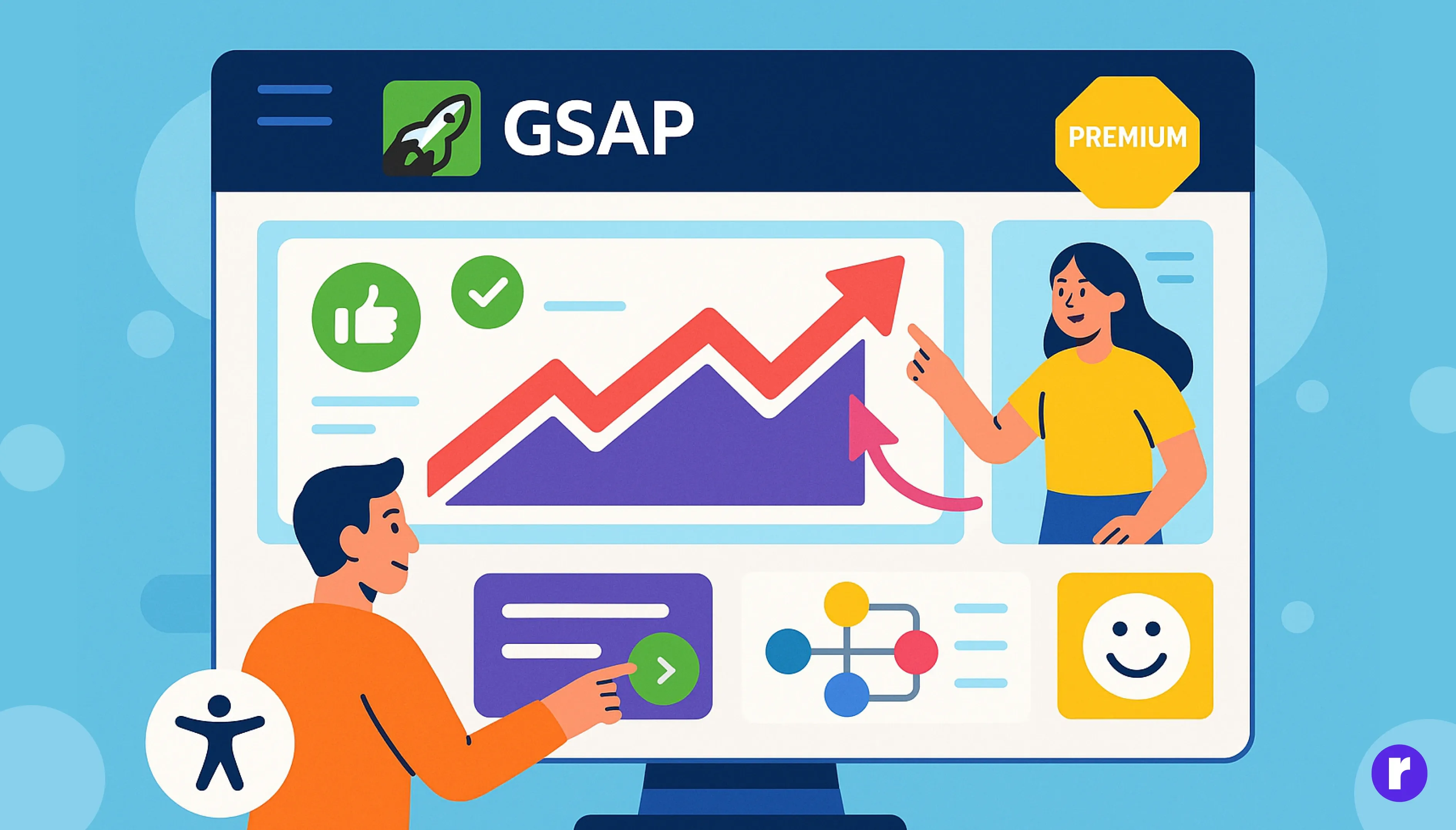
Animations aren’t only about delight; they can directly impact product goals.
- Improved User Engagement: Users spend more time on dynamic and lively websites.
- Clearer Navigation: Motion guides the eye, helping users understand where to look.
- Brand Differentiation: Thoughtful animations make your product feel polished and premium.
- Accessibility of Interaction: Animations can reduce cognitive load by providing subtle feedback (like confirming a button press).
Clients and stakeholders notice these enhancements. A developer who can use GSAP to implement strategic motion design is more valuable than one who just writes static UIs.
Why GSAP Beats the Alternatives
You might wonder why not just stick with CSS animations or use libraries like Anime.js or Framer Motion.
- CSS animations: Great for simple cases, but lack dynamic control. No easy way to pause, reverse, or chain.
- Anime.js: A solid library, but not as performant at scale, and its ecosystem is smaller.
- Framer Motion: Excellent for React projects, but GSAP isn’t tied to any framework. It works across React, Vue, Angular, vanilla JS, or even in canvas-based projects.
GSAP’s neutrality makes it a future-proof skill. Regardless of which tech stack dominates tomorrow, GSAP will integrate seamlessly.
Learning Curve: Easier Than You Think
At first glance, GSAP might seem intimidating. However, its syntax is refreshingly straightforward. Example: Animating a box from left to right with CSS would involve transitions, classes, and keyframes. With GSAP, it’s a single line of code:
gsap.to(".box", { x: 200, duration: 1 });From there, you can scale up to advanced concepts like timelines:
let tl = gsap.timeline();
tl.to(".box", { x: 200, duration: 1 })
.to(".box", { y: 100, duration: 1 })
.to(".box", { rotation: 360, duration: 1 });This readable, programmatic approach feels natural to developers, especially if you’ve worked with state machines or asynchronous code.
Future-Proofing Your Developer Career
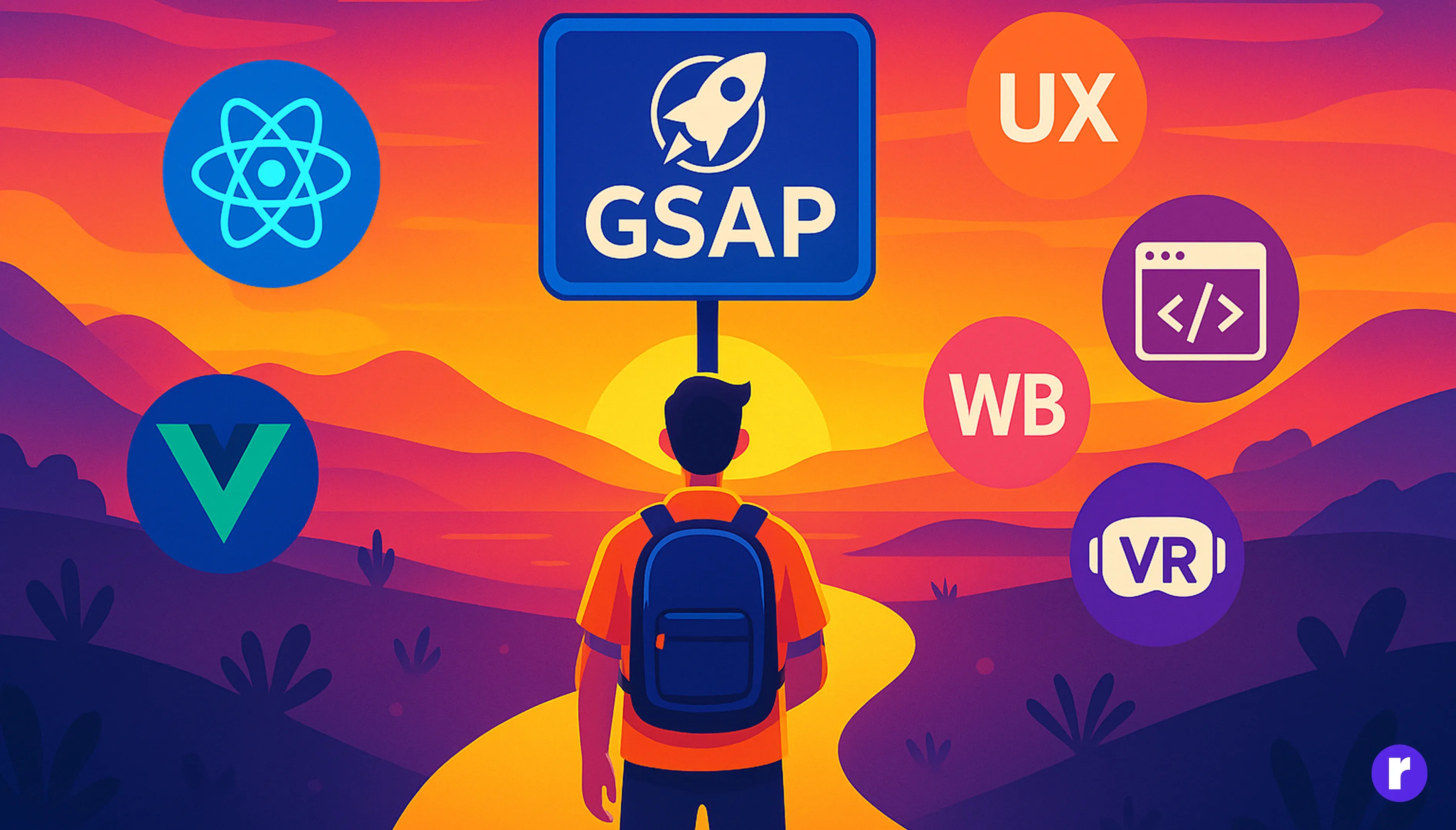
Web development is constantly evolving. Frameworks rise and fall, design trends change, and users expect more immersive experiences. However, one thing remains constant: motion is here to stay.
By mastering GSAP, you’re not just learning a library; you’re future-proofing your skills. Employers, agencies, and startups value developers who can:
- Bring static mockups to life.
- Translate complex UX designs into interactive experiences.
- Collaborate with designers on storytelling-driven interfaces.
It’s not just a technical skill; it’s a career differentiator.
The Creative Edge
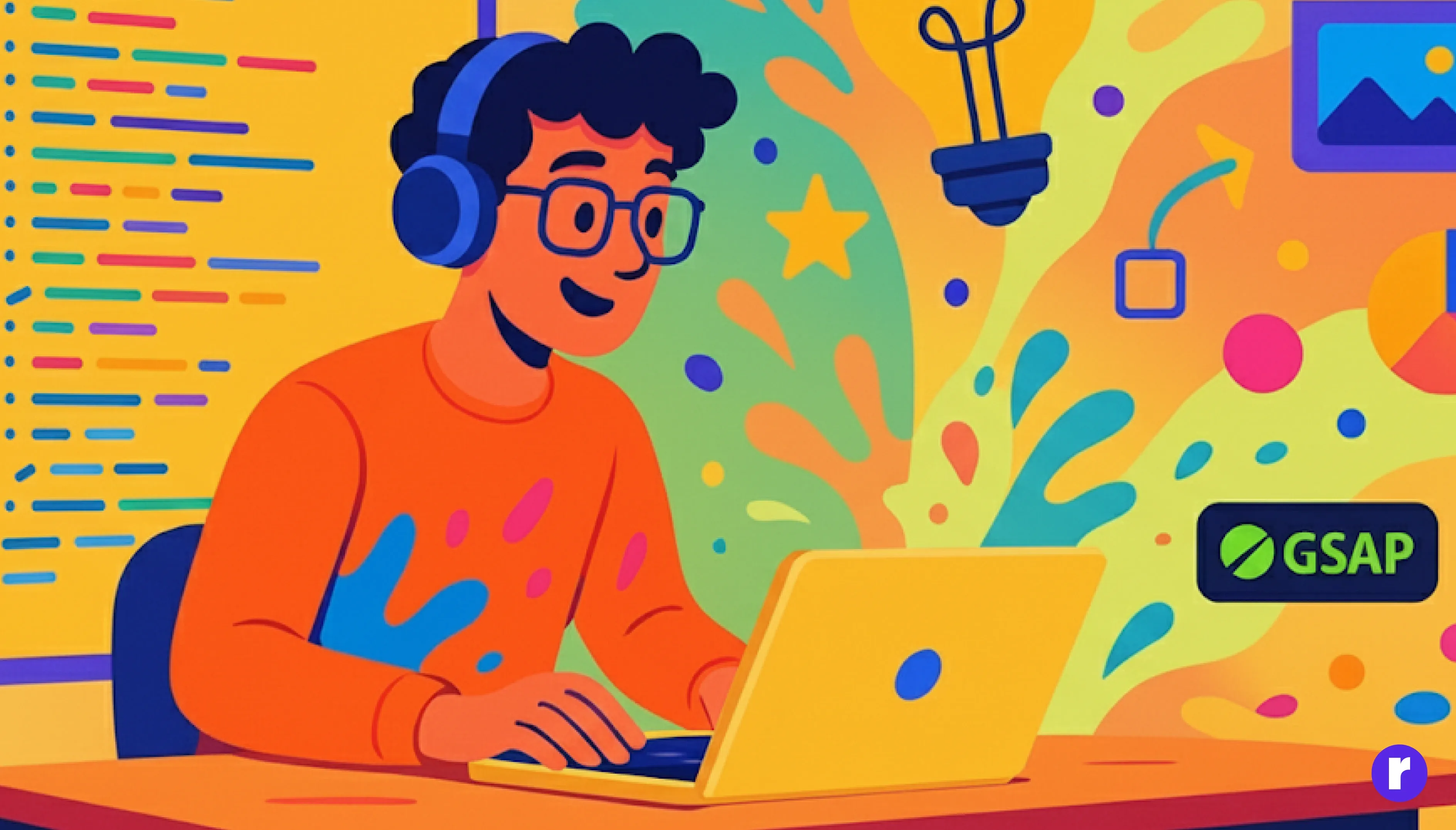
For many developers, GSAP unlocks creativity. It blurs the line between developer and designer. Suddenly, you’re not just coding logic—you’re crafting experiences.
Whether you’re building a landing page, an educational app, or experimenting with generative art, GSAP empowers you to play, experiment, and innovate. This is rare in a field often dominated by rigid requirements and deadlines.
Conclusion
In a digital world saturated with websites and apps, animation is one of the strongest ways to stand out. GSAP is not just “another library”—it’s the gold standard for high-performance, expressive, and developer-friendly animations.
Learning GSAP means:-
- You can deliver richer, more engaging experiences.
- You’ll have tools that scale from simple hovers to cinematic sequences.
- Your skills remain relevant regardless of the frameworks that come and go.
If you’ve been relying solely on CSS transitions or lightweight animation libraries, it’s time to level up. Invest a weekend in GSAP, and you’ll carry that skill throughout your career.
Animations aren’t the icing on the cake anymore—they’re the language of interaction. And GSAP is the most fluent way to speak it.
